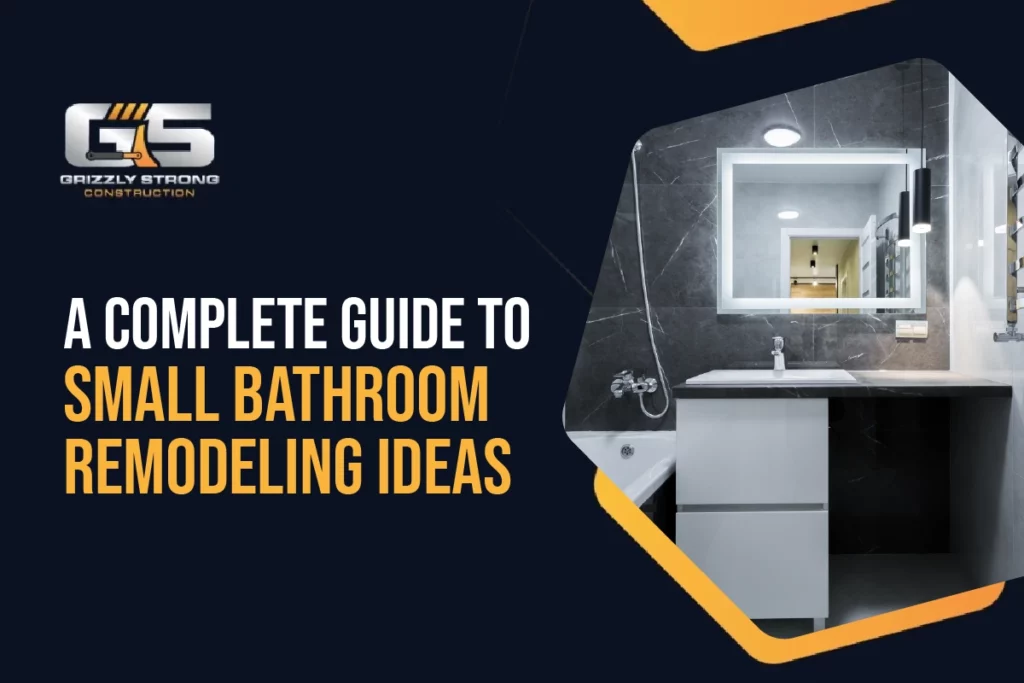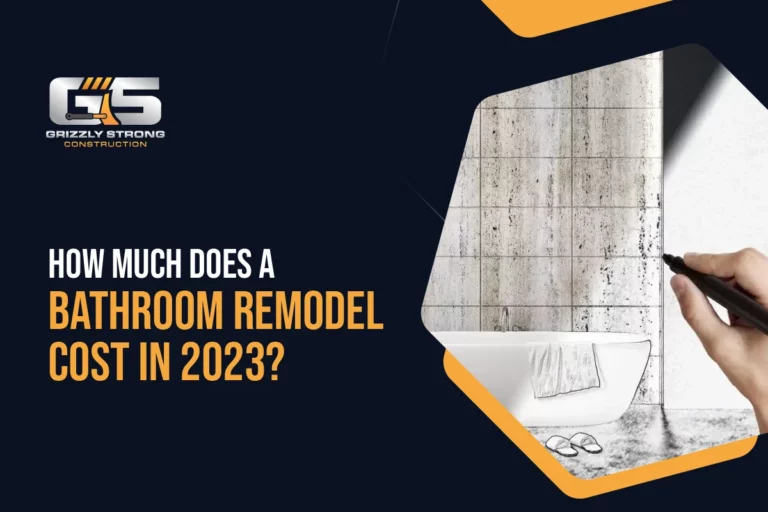When it comes to small bathrooms, maximizing space and functionality is key. A well-planned and executed remodeling project can transform your small bathroom into a stylish and functional oasis. In this comprehensive guide, we will explore a variety of ideas and strategies to help you make the most of your small bathroom. From clever storage solutions to creative design concepts, we’ve got you covered.
Assessing Your Needs
Before diving into the remodeling process, it’s important to assess your needs and priorities. Consider how you use your bathroom and what elements are essential for you. Identify the specific pain points and challenges you face in your small bathroom, such as limited storage or lack of counter space. This assessment will help you prioritize your remodeling goals and make informed decisions throughout the process.
Optimizing Space
Maximizing space is crucial in a small bathroom. Explore space-saving fixtures and design elements that can help you achieve this goal. Consider options such as wall-mounted vanities or toilets, which free up valuable floor space. Install compact and multifunctional fixtures, such as corner sinks or pedestal sinks, to make the most of every inch. Additionally, utilize vertical space by incorporating tall cabinets or shelves for extra storage.
Creative Storage Solutions
In small bathrooms, effective storage solutions are essential. Look for innovative ways to store your bathroom essentials without cluttering the space. Utilize wall niches, recessed shelving, or floating shelves to create storage areas that are both functional and visually appealing. Consider adding hooks, towel bars, or magnetic strips for easy organization of towels, robes, and smaller bathroom items.
Light and Bright
Optical illusions can make a significant difference in a small bathroom. Use lighting to create a bright and airy atmosphere. Maximize natural light by keeping windows uncovered or using sheer curtains. Incorporate well-placed artificial lighting, such as recessed lights or sconces, to eliminate shadows and make the space feel larger. Consider using mirrors to reflect light and create the illusion of more space.
Color and Pattern
The right choice of colors and patterns can visually expand your small bathroom. Opt for light and neutral color palettes, such as whites, creams, or pastels, to create a sense of openness. Consider incorporating subtle patterns or textures through tiles or wallpaper to add visual interest without overwhelming the space. Remember, less is often more in a small bathroom to maintain a clean and cohesive look.
Optimal Layout and Flow
Careful consideration of the layout and flow of your small bathroom can greatly enhance its functionality. Aim for an efficient layout that allows for easy movement and access to essential fixtures. Avoid overcrowding the space and maintain clear pathways. Consult with a professional to explore different layout options and determine the best configuration for your specific bathroom.
Luxurious Details
Even in a small bathroom, luxurious details can make a big impact. Consider incorporating high-end finishes, such as marble or quartz countertops, to add elegance and sophistication. Install stylish and modern fixtures, such as rainfall showerheads or freestanding tubs, to create a luxurious spa-like experience. Don’t forget the smaller details like high-quality towels, decorative accents, and scented candles to elevate the overall ambiance.
Eco-Friendly Choices
Small bathroom remodeling presents an opportunity to embrace eco-friendly choices. Opt for water-efficient fixtures, such as low-flow toilets and faucets, to conserve water. Choose sustainable and environmentally friendly materials for your flooring, countertops, and cabinetry. Incorporate natural elements, such as plants, to improve indoor air quality and create a connection to nature.
Professional Guidance
While it’s possible to tackle a small bathroom remodeling project as a DIY endeavor, seeking professional guidance is highly recommended. Professional contractors and designers have the expertise and experience to maximize the potential of your small bathroom. They can provide valuable insights, offer creative solutions, and ensure that the remodeling process runs smoothly from start to finish.
Cost Considerations for Small Bathroom Remodeling
When planning a small bathroom remodeling project, it’s essential to consider the associated costs. While the total cost will vary depending on factors such as the scope of work, materials chosen, and location, understanding the key cost considerations will help you set a realistic budget. Here are some factors to keep in mind:
Size of the Bathroom
The size of your bathroom will have a direct impact on the overall cost of the project. Generally, smaller bathrooms require fewer materials and labor, resulting in lower costs compared to larger bathrooms. However, keep in mind that even small bathrooms can incur significant expenses if you opt for high-end fixtures or custom features.
Fixture Upgrades
Upgrading fixtures is a common aspect of bathroom remodeling. Consider the cost of replacing or upgrading items such as the toilet, sink, bathtub or shower, and faucets. The price range for fixtures can vary greatly depending on the quality, brand, and style you choose. It’s important to strike a balance between your budget and your desired level of quality and aesthetics.
Flooring and Wall Finishes
Flooring and wall finishes play a crucial role in the overall look and feel of your bathroom. The cost of materials such as tiles, hardwood, vinyl, or laminate will vary based on the quality and design. Consider the square footage of your bathroom when estimating the cost of materials. Additionally, if you plan to include custom tiling or intricate patterns, it may increase the overall cost.
Cabinetry and Storage
Storage is essential in a small bathroom, and custom cabinetry can be an excellent investment. The cost of cabinetry will depend on factors such as the size, material, design complexity, and hardware chosen. Consider whether you prefer stock cabinets, semi-custom options, or fully customized solutions. Keep in mind that custom cabinetry may come with a higher price tag but offers tailored functionality and aesthetics.
Plumbing and Electrical Work
If your small bathroom remodel involves relocating plumbing fixtures or upgrading electrical systems, it will impact the cost. The complexity of the plumbing and electrical work required will determine the expenses involved. It’s crucial to hire a licensed professional for these tasks to ensure compliance with local building codes and to avoid potential issues down the line.
Labor and Contractor Fees
The cost of labor and contractor fees will also be a significant component of your bathroom remodeling budget. Hiring experienced professionals ensures the work is done to code and meets your expectations. The contractor’s fees will depend on their level of expertise, reputation, and the complexity of the project. Be sure to obtain multiple quotes, compare their services, and check references before making a decision.
Permits and Unexpected Costs
Don’t forget to factor in the cost of permits required for your remodeling project. Consult with your local building department to determine the specific permits needed and their associated fees. Additionally, it’s wise to set aside a contingency budget to account for any unexpected costs or unforeseen issues that may arise during the remodeling process.
Tips for Remodeling a Small Bathroom
Plan and Prioritize
Start by assessing your needs and priorities for the bathroom remodel. Determine the essential elements you want to incorporate and set a clear vision for the space. Consider factors such as storage, functionality, and aesthetic preferences. Planning ahead will help you make informed decisions throughout the remodeling process.
Optimize Space
Maximize the available space in your small bathroom by utilizing smart storage solutions and space-saving fixtures. Consider installing wall-mounted cabinets or shelves to free up floor space. Explore compact and multifunctional fixtures, such as corner sinks or pedestal sinks, to maximize functionality without taking up excessive room.
Light and Bright
Ample lighting can create the illusion of a larger space. Incorporate both natural and artificial lighting to make your small bathroom feel bright and open. Keep windows uncovered or use sheer curtains to maximize natural light. Add well-placed overhead lights, wall sconces, or task lighting to eliminate shadows and make the space feel more expansive.
Use Light Colors
Opt for light and neutral colors to visually expand your small bathroom. Light-colored walls, tiles, and fixtures can make the space feel more open and airy. Consider using whites, creams, or pastels for a clean and fresh look. You can add pops of color through accessories and accents to bring personality to the space.
Mirror Magic
Strategically placed mirrors can create the illusion of a larger bathroom. Install a large mirror above the sink or across one wall to reflect light and give the impression of more space. Additionally, mirrored cabinets or medicine cabinets can provide storage while enhancing the perceived size of the room.
Smart Storage Solutions
Effective storage is crucial in a small bathroom. Look for innovative storage solutions that maximize space and keep the area organized. Utilize wall niches, recessed shelving, or floating shelves to create storage areas without encroaching on floor space. Consider adding hooks, towel bars, or magnetic strips to hang towels and keep small items within reach.
Minimize Clutter
Keep the bathroom clutter-free to maintain a sense of openness. Avoid overcrowding the space with unnecessary accessories or decor. Opt for a minimalist approach, keeping only essential items visible and neatly organized. Utilize storage solutions to keep toiletries, cleaning supplies, and other items out of sight.
Focus on Details
In a small bathroom, every detail counts. Pay attention to small details that can enhance the overall aesthetics and functionality. Choose stylish fixtures, faucets, and hardware that complement the design theme. Consider adding a statement piece, such as a unique light fixture or a decorative mirror, to add personality and visual interest.
Consider Vertical Space
Utilize the vertical space in your small bathroom to maximize storage. Install tall cabinets or shelves that reach the ceiling to take advantage of the unused space. You can use them to store towels, linens, or other bathroom essentials. Additionally, consider hanging plants or decorative elements from the ceiling to draw the eye upward and create the illusion of a taller space.
Seek Professional Advice
If you’re unsure about the remodeling process or need guidance, don’t hesitate to consult with a professional. A bathroom remodeling contractor or designer can provide valuable insights, recommend space-saving solutions, and ensure the project is executed seamlessly. They can help you make the most of your small bathroom while adhering to your budget and timeline.
How a Small Bathroom Is Remodeled?
When it comes to remodeling a small bathroom, careful planning and thoughtful design are key. Here is an overview of how a small bathroom is typically remodeled:
Assessment and Planning
The first step in remodeling a small bathroom is assessing the current space and identifying your remodeling goals. Consider the layout, functionality, and any specific issues or challenges you want to address. Determine your budget and set priorities for the renovation.
Design and Layout
Work with a designer or use online design tools to create a functional and visually appealing layout for your small bathroom. Consider factors such as the placement of fixtures, storage options, and optimizing available space. Explore design elements like tile choices, color schemes, and fixtures that suit your personal style and preferences.
Demolition
Once the design is finalized, the next step is to prepare the bathroom for remodeling by removing existing fixtures, tiles, and any other elements that need to be replaced. This may involve removing old flooring, wall tiles, cabinets, and fixtures. Ensure proper safety measures are taken, and any necessary permits are obtained.
Plumbing and Electrical Work
If your remodeling plans involve changes to the plumbing or electrical systems, it’s crucial to hire licensed professionals for this phase. They will ensure that the plumbing and electrical work meet building codes and regulations. This may include relocating plumbing lines, installing new fixtures, or upgrading electrical outlets and lighting.
Framing and Wall Preparation
In some cases, modifications to the walls or ceiling may be necessary to accommodate new features or fixtures. This may involve framing new walls, reinforcing existing structures, or repairing any damaged areas. Proper insulation and moisture barriers should be installed to protect against water damage.
Installation of Fixtures and Features
Once the necessary preparations are complete, the installation of new fixtures and features can begin. This includes installing new bathtub or shower units, sinks, toilets, vanities, faucets, and any other chosen elements. Careful attention should be given to proper installation, ensuring that everything is level, secure, and properly connected.
Flooring and Wall Finishes
With the fixtures in place, the focus shifts to flooring and wall finishes. Select suitable materials that are both functional and visually appealing. This may include options such as tiles, vinyl, laminate, or hardwood flooring. Apply wall finishes, such as paint or tile, that complement the overall design and create a cohesive look.
Cabinetry and Storage Installation
In a small bathroom, efficient storage is crucial. Install cabinets, shelves, or other storage solutions that maximize the available space. Customized cabinetry can be designed to fit the specific dimensions of your small bathroom, ensuring optimal storage and organization.
Plumbing and Electrical Fixture Connections
Once the fixtures, flooring, and cabinetry are in place, the plumbing and electrical connections can be finalized. This includes connecting the sink, toilet, shower, and other fixtures to the plumbing system. Electrical fixtures, such as lighting and outlets, should be properly wired and connected.
Finishing Touches
The final step is to add the finishing touches that bring the small bathroom remodel together. This may include installing mirrors, lighting fixtures, towel racks, hooks, and other accessories. Pay attention to details such as choosing the right hardware, adding decorative elements, and ensuring proper ventilation.
Cleaning and Inspection
After completing the remodel, thoroughly clean the bathroom and remove any construction debris. Perform a thorough inspection to ensure that everything is functioning properly, there are no leaks, and all fixtures are secure. Make any necessary adjustments or touch-ups to achieve a polished and complete look.
Remodeling a small bathroom requires careful attention to detail, strategic design choices, and skilled craftsmanship. By following these steps and working with experienced professionals, you can transform your small bathroom into a functional and stylish space that maximizes its potential.
Conclusion
A small bathroom doesn’t mean you have to compromise on style or functionality. By following this complete guide to small bathroom remodeling ideas, you can transform your space into a stunning and practical sanctuary. Assess your needs, optimize space, and incorporate clever storage solutions. Embrace light and bright design, choose colors wisely, and create an optimal layout. Add luxurious details and eco-friendly choices to enhance the overall experience. With professional guidance, your small bathroom can become a true reflection of your personal style and a source of daily comfort and enjoyment.
Frequently Asked Questions
How Much Does It Cost to Remodel a Small Bathroom?
The cost of remodeling a small bathroom can vary depending on factors such as the scope of the project, the materials used, and the location. On average, a small bathroom remodel can cost anywhere from a few thousand dollars to tens of thousands of dollars. It’s best to consult with a contractor or designer to get an accurate estimate based on your specific project requirements.
How Long Does It Take To Remodel a Small Bathroom?
The duration of a small bathroom remodel can vary depending on the complexity of the project, the availability of materials, and the contractor’s schedule. Typically, a small bathroom remodel can take anywhere from a few weeks to a couple of months. It’s important to discuss the timeline with your contractor and plan accordingly to minimize disruptions.
Do I Need a Permit for Remodeling My Small Bathroom?
The need for a permit depends on the extent of the remodel and local building codes. In some cases, minor cosmetic changes may not require a permit, but if you’re making structural changes or altering plumbing and electrical systems, a permit may be necessary. It’s best to check with your local building department to determine the specific permit requirements for your project.
How Can I Maximize Storage in a Small Bathroom?
Maximizing storage in a small bathroom is crucial to maintain functionality and organization. Consider utilizing vertical space with wall-mounted cabinets or shelves. Explore built-in storage options such as recessed shelving or niches in shower walls. Utilize space-saving fixtures like wall-hung toilets or pedestal sinks. Customized cabinetry and clever organization solutions can also help optimize storage in a small bathroom.
How Can I Make a Small Bathroom Look Bigger?
There are several design techniques that can create the illusion of a larger bathroom. Using light and neutral colors can make the space feel more open and airy. Incorporating mirrors, both large and strategically placed, can reflect light and create a sense of depth. Opting for a seamless shower enclosure or a clear glass door can eliminate visual barriers. Maximizing natural light, using proper lighting fixtures, and minimizing clutter can also contribute to a visually larger bathroom.
Can I DIY a Small Bathroom Remodel?
While some small bathroom updates can be DIY projects, a complete remodel often requires professional expertise. Plumbing, electrical work, and structural modifications should be handled by licensed professionals to ensure safety and compliance with building codes. Hiring experienced contractors or designers can help you navigate the complexities of a small bathroom remodel and ensure a successful outcome.
How Do I Choose the Right Fixtures and Materials for a Small Bathroom?
When selecting fixtures and materials for a small bathroom, consider both functionality and aesthetics. Opt for space-saving fixtures that are proportionate to the size of the bathroom. Choose materials that are durable, water-resistant, and easy to clean. Consider the overall style and design theme of your bathroom to ensure that the fixtures and materials complement each other and create a cohesive look.
What Are Some Design Tips for a Small Bathroom?
Design tips for a small bathroom include using light colors, maximizing natural light, incorporating mirrors, utilizing vertical space, and keeping the design minimalistic and clutter-free. Choosing space-saving fixtures, optimizing storage, and selecting the right lighting fixtures are also important considerations. Working with a designer can provide additional insights and expertise to create a functional and visually appealing small bathroom design.



